85 mm divisional gun D-44
The 85-mm divisional gun D-44 (Russian: 85-мм дивизионная пушка Д-44) was a Soviet divisional 85-mm calibre field artillery gun used in the last action of World War II. It was designed as the replacement for the 76 mm divisional gun M1942 (ZiS-3). The gun is no longer in front-line service with the Russian Ground Forces, although some 200 of the Chinese Type 56 variant are still in service with the Pakistan Army.[3] Wartime service included use by communist forces during the Vietnam War[4] and by Arab forces during their conflicts with Israel.
| 85-mm divisional gun D-44 | |
|---|---|
 85 mm D-44 divisional gun. | |
| Type | Field gun |
| Place of origin | Soviet Union |
| Service history | |
| Wars | Vietnam War[1] First Nagorno-Karabakh War War in Donbass 2020 Nagorno-Karabakh conflict |
| Production history | |
| Designed | 1943–1944 |
| Manufacturer | Uralmash |
| Produced | 1944–1953 |
| No. built | 10,800 |
| Variants | D-44N SD-44 Chinese Type 56 |
| Specifications | |
| Mass | D-44: 1,725 kg (3,803 lbs) SD-44: 2,250 kg (4,960 lbs) |
| Length | 8.34 metres (27 ft 4 in) |
| Barrel length | 4.7 m (15 ft 5 in) 55 calibers[2] |
| Width | 1.78 metres (5 ft 10 in) |
| Height | 1.42 metres (4 ft 8 in) |
| Crew | 8 |
| Shell | Fixed QF 85×629 mm. R[2] (R/112mm) |
| Caliber | 85 mm (3.34 in) |
| Breech | Semi-automatic vertical sliding-wedge[2] |
| Recoil | Hydro-pneumatic[2] |
| Carriage | Split trail |
| Elevation | -7° to 35° |
| Traverse | 54° |
| Rate of fire | up to 20 rounds per minute (burst) |
| Muzzle velocity | 1,030 m/s (3,379 ft/s) |
| Effective firing range | 1,150 m (1,257 yds) (HVAP-T) |
| Maximum firing range | 15.65 km (9.72 mi) |
| Sights | OP-2-7 w/5.5X Magnification |
Overview
The design of the D-44 started in 1943 at the design bureau of No.9 factory "Uralmash" and production began in 1944. Its GRAU code was 52-P-367.[5] The SD-44 was a 1950s variant with an auxiliary propulsion unit and ammunition box for 10 rounds, with 697 issued to the airborne forces (VDV) from 1954.[6] The D-44N was a 1960s variant with an APN 3-7 infra-red illumination device for night combat. China received D-44s during the Korean War and began manufacturing a copy, the Type 56, in the early 1960s.[7] Finally, the Polish Army has equipped some of their D-44 guns with electrical subsystems in the early 1980s and designated them D-44M and D-44MN.[8]
The barrel was developed from that of the T-34-85 tank and was capable of firing 20–25 high-explosive (HE), armor-piercing, and high-explosive antitank (HEAT) projectiles per minute. Subcaliber BR-365P HVAP-T (high velocity armor-piercing-tracer) projectiles were capable of penetrating 100 mm of armor at 1000 meters at a ninety-degree obliquity, and the BR-367P HVAP-T projectile penetrates 180 mm of armor under the same conditions.[8] The post-war round O-365K HE weighed 9.5 kg and packed 741 grams of TNT as its bursting charge, while the BK-2M HEAT-FS (fin-stabilized) projectile can penetrate 300 mm of armor. The HEAT round for the Type 56 has a maximum range of 970 meters and will penetrate 100 mm of armor at an angle of 65 degrees.[9]
The gun uses GAZ-AA tires, and is towed by a 2.5t truck[10] or a Ya-12 tractor with the average speed of 20–25 km/h on surfaced roads, and 11 km/h over open terrain, with a maximum towing speed over asphalt roadway of about 55 km/h.[11] The SD-44's auxiliary propulsion unit M-72 of 14 hp can move the gun at road speeds up to 25 km/h.[12]
The gun uses the OP-2-7 sight with 5.5x magnification for day combat. The sight permits target acquisition at 1500 meters.[13]
| Performance of D-44 and comparable weapons | ||
| Explosive projectiles and range | ||
| Weapon | Projectile Weight (Bursting charge), kg | Maximum range, meters |
| 85 mm D-44 (firing O-365K) | 9.5 (0.74) | 15,650 |
| 25 Pounder Mk II (firing HE Mk. I D) | 11.33 (0.82) | 12,253 |
| 8.8 cm FlaK 18 (firing SprGr L4.5) | 9.4 (0.87) | 14,815 |
| 90 mm M3 (firing M71) | 10.64 (0.93) | 17,337 |
| Data taken from Janes (1982), The American Arsenal, German Artillery of World War Two, and tarrif.net. | ||
Production
The D-44 was produced from 1945 until 1953. During the years 1948-1950, over two thousand D-44s were produced per year.[8] The D-44 also served as the basis from which the 85 mm antitank gun D-48 was developed and also the RPU-14 multiple rocket launcher uses the D-44's carriage.
Use by other nations
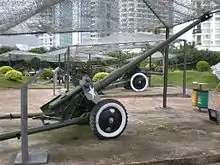

By the 1950s, the D-44 had been exported for use by Warsaw Pact nations,[14] with the gun remaining in service with the East German National People's Army until the fall of the East Germany. Besides Pakistan and East Germany, other users include(d) Albania, Algeria, Armenia, Azerbaijan, Bulgaria, Cambodia, China (Type 56), Cuba, Egypt, Georgia, Guinea, Guinea-Bissau, Hungary, Iran, Iraq, North Korea, Laos, Mali, Morocco, Mozambique, Poland, Romania, Somalia, Sri Lanka, Sudan, Syria, Vietnam[15] and Zambia [16]
Current Users
 Algeria - 80 in service.[17]
Algeria - 80 in service.[17]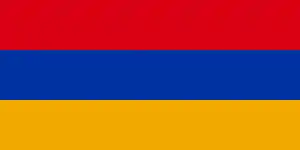 Armenia - 35 in service.[17]
Armenia - 35 in service.[17] Azerbaijan - 100 in service.[17]
Azerbaijan - 100 in service.[17]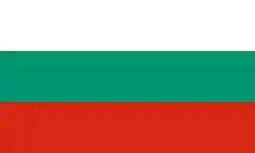 Bulgaria - 150 in storage.[17]
Bulgaria - 150 in storage.[17] Cuba - Unknown number in service.[17]
Cuba - Unknown number in service.[17] Democratic Republic of the Congo - 10 Type 56 in service.[17]
Democratic Republic of the Congo - 10 Type 56 in service.[17] Eritrea - Unknown number in service.[17]
Eritrea - Unknown number in service.[17] Ethiopia - Unknown number of Type 56 service.[17]
Ethiopia - Unknown number of Type 56 service.[17] Georgia - Unknown number in service.[17]
Georgia - Unknown number in service.[17]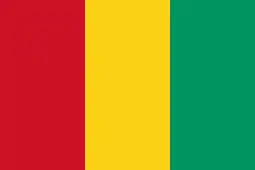 Guinea - 6 in service.[17]
Guinea - 6 in service.[17] Guinea-Bissau - 8 in service.[17]
Guinea-Bissau - 8 in service.[17] Mongolia - Unknown number of D-44 and D-48 in service.[17]
Mongolia - Unknown number of D-44 and D-48 in service.[17]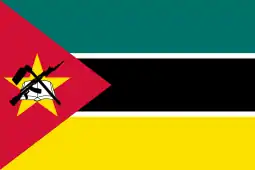 Mozambique - 12 Type 56 in service.[17]
Mozambique - 12 Type 56 in service.[17] Pakistan - 200 in service.[17]
Pakistan - 200 in service.[17] Sudan - Unknown number in service.[17]
Sudan - Unknown number in service.[17]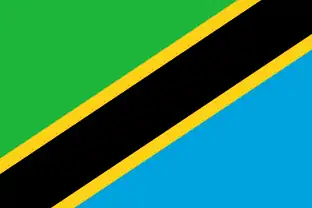 Tanzania - 75 Type 56 in service.[17]
Tanzania - 75 Type 56 in service.[17] Ukraine - Unknown number in service.[17]
Ukraine - Unknown number in service.[17] Vietnam - Unknown number in service.[1]
Vietnam - Unknown number in service.[1]
Former Users
 Albania
Albania China
China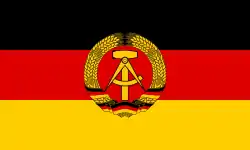 East Germany
East Germany Iraq
Iraq Iran
Iran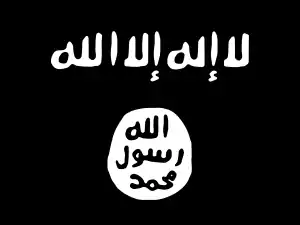 ISIS - 1 captured in Syria.[18]
ISIS - 1 captured in Syria.[18] Mali
Mali.svg.png.webp) North Vietnam - Used during Vietnam War.
North Vietnam - Used during Vietnam War..svg.png.webp) Polish People's Republic - Used by Polish People's Army used during World War II and post war.[19]
Polish People's Republic - Used by Polish People's Army used during World War II and post war.[19] Russia
Russia Sri Lanka
Sri Lanka Somalia - Status unknown.
Somalia - Status unknown. Soviet Union
Soviet Union Yemen
Yemen
See also
- 85 mm vz. 52 - A similar Czech gun which used the same ammunition.
Citations
- "Đáng gờm khẩu pháo bắn 20 phát/phút bảo vệ đảo Việt Nam". danviet.vn.
- Foss, Christopher (1977). Jane's pocket book of towed artillery. New York: Collier. p. 45. ISBN 0020806000. OCLC 911907988.
- Mehta, Admiral Sureesh (2008). South Asia Defence And Strategic Year Book 2008. Pentagon Press. p. 329. ISBN 978-81-8274-320-5.
- Off, David E. (1977). "Part VI Vietnamization" (PDF). Field Artillery Magazine. pp. 42–47.
- "Пушки". www.russianarms.ru.
- Six SD-44's were issued per antitank battery in each airborne regiment, for a total of 18 in an airborne division. Janes, p. 525.
- The People's Liberation Army assigned 12 Type 56 guns per artillery regiment. Brassey's, p. 124.
- Janes (2008), p. 899.
- Brassey's p. 124.
- Both ZIL-157's and URAL-375D's were used as towing trucks. See Janes and Kopenhagen.
- "Д-44". easyget.narod.ru.
- TRADOC Worldwide Equipment Guide, p. 5-4.
- WEG, p. 5-4.
- For example, the East German forces first publicly displayed SD-44 pieces in 1958. Kopenhagen, p. 48.
- Janes, p. 526.
- http://www.lusakatimes.com/2014/10/27/jubilie/
- Military Balance 2017. IISS. 2017. ISBN 978-1857439007.
- "Vehicles and equipment captured and operated by the Islamic State inside Syria". spioenkop.blogspot.com. 31 March 2015. Archived from the original on 11 March 2016. Retrieved 25 March 2019.
- "85 mm wz. 1944 D-44, D-48, armata dywizyjna, przeciwpancerna". www.2wojna.pl.
References
- Brassey's Encyclopedia of Land Forces and Warfare, Brassey's Inc., Washington D.C., 2000, ISBN 1-57488-087-X.
- Die Landstreitkräfte der NVA, Wilfried Kopenhagen, Motorbuch Verlag, Stuttart, 2003, ISBN 3-613-02297-4.
- German Artillery of World War Two, Ian V. Hogg, Greenhill Books, London, 2002. ISBN 1-85367-480-X.
- Foss, Christopher F. (ed.) Jane's Armour and Artillery 1981-1982, Jane's Publishing Company Ltd, London & New York, 1982. ISBN 978-0-531-03976-2
- Foss, Christopher F. (ed.) Jane's Armour and Artillery 2007-2008, Jane's Publishing Company Ltd, Coulsdon, 2007. ISBN 978-0-7106-2794-0
- Shunkov V. N. The Weapons of the Red Army, Mn. Harvest, 1999 (Шунков В. Н. - Оружие Красной Армии. — Мн.: Харвест, 1999.) ISBN 985-433-469-4.
- The American Arsenal, Ian V. Hogg (introduction), Greenhill Books, London, 2001. ISBN 1-85367-470-2.
- TRADOC Worldwide Equipment Guide
External links
| Wikimedia Commons has media related to D-44 85 mm gun. |
